Cerebral asymmetry and the specific functions of the

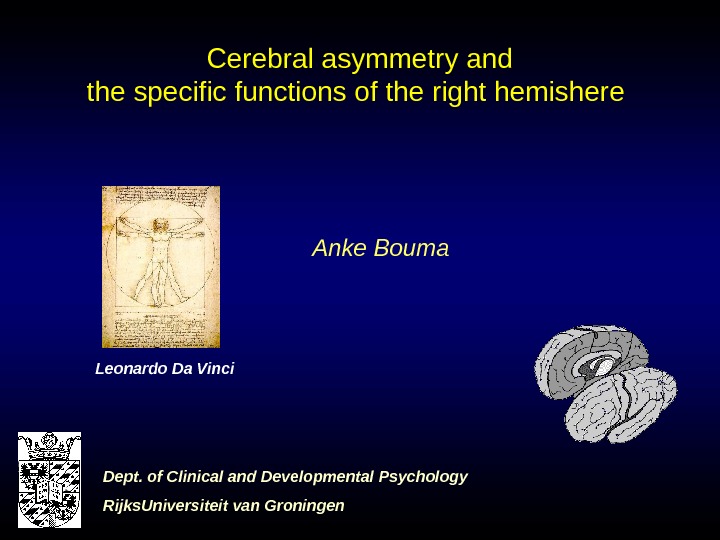
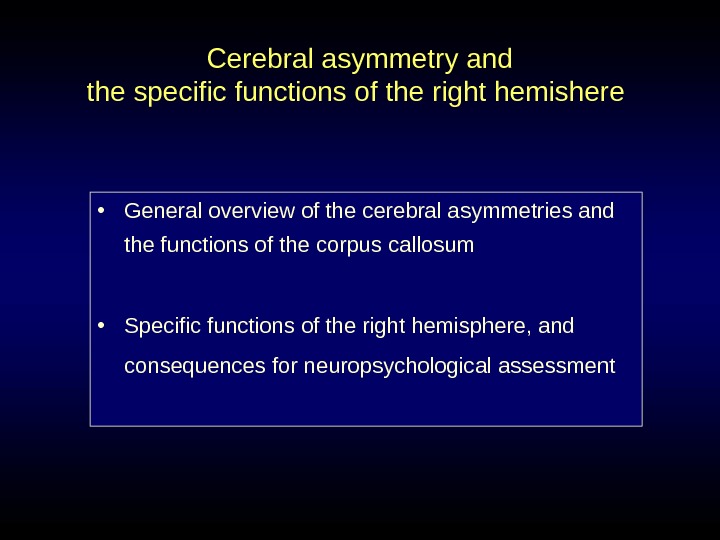
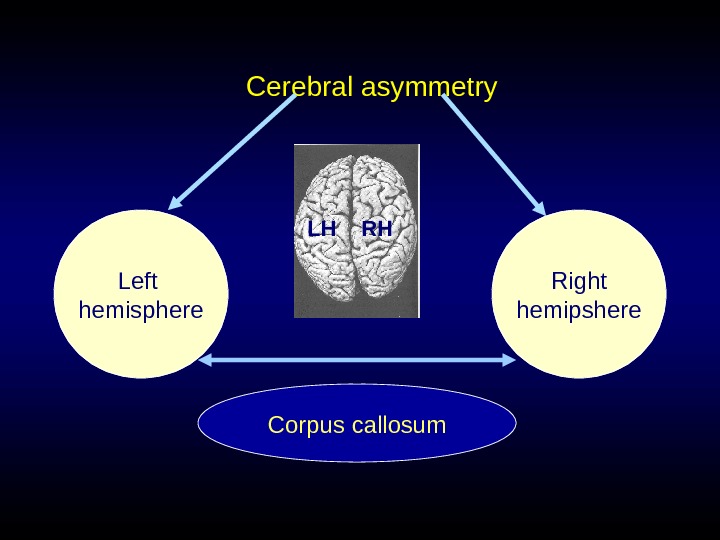
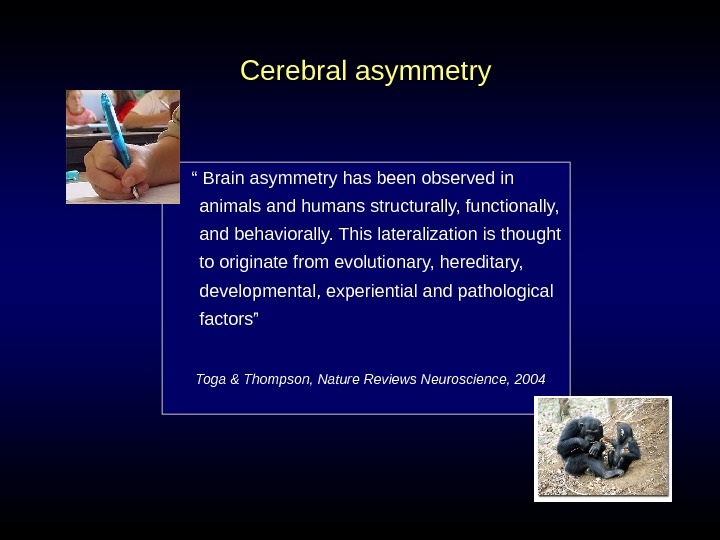
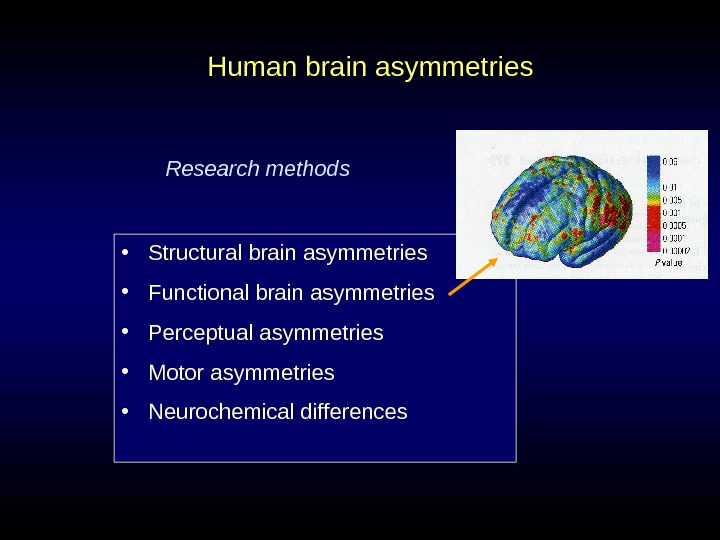
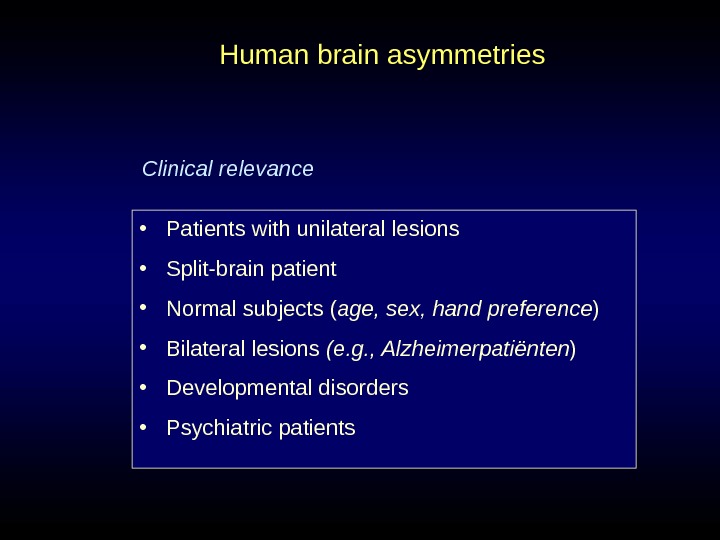
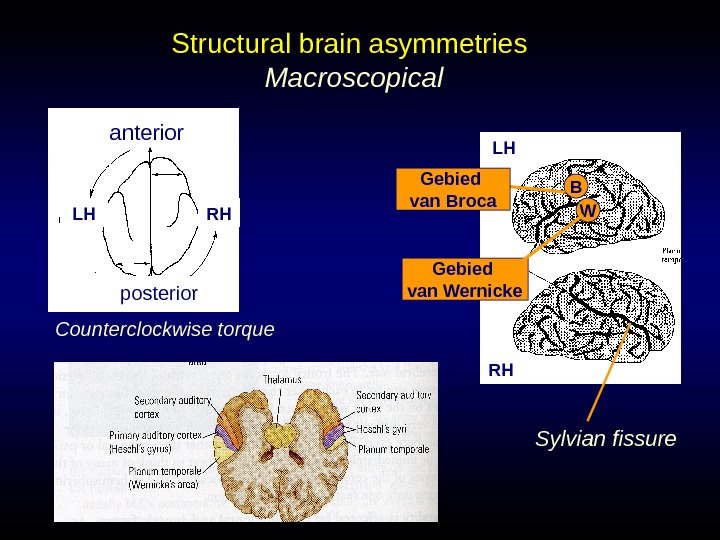
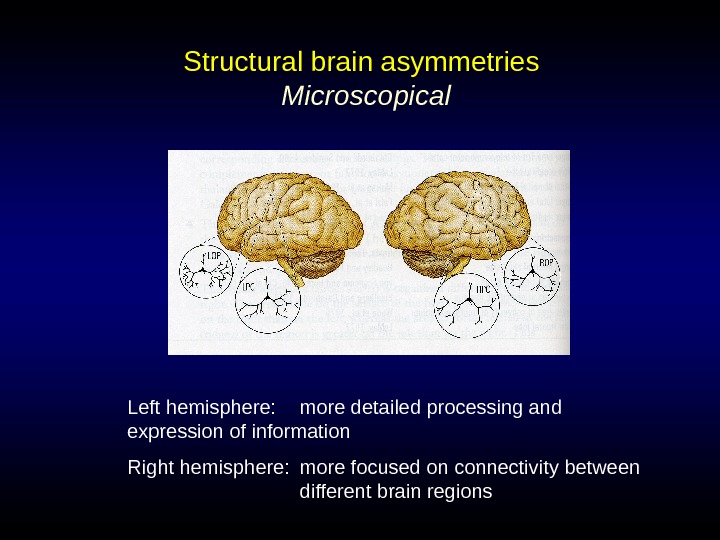

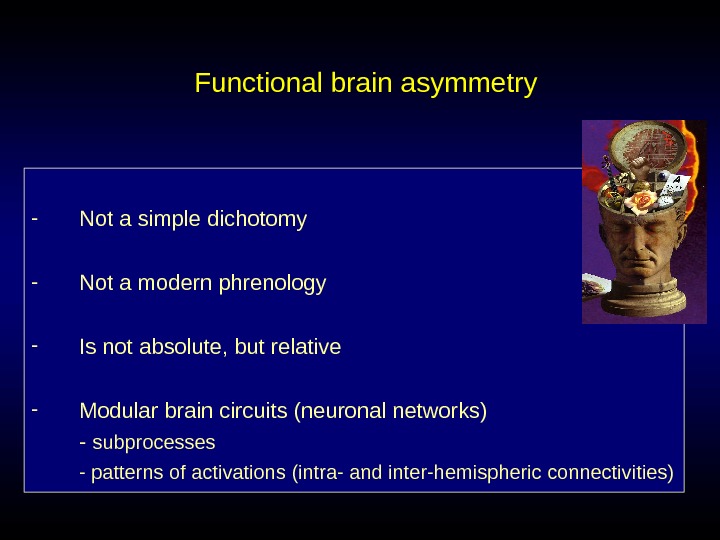
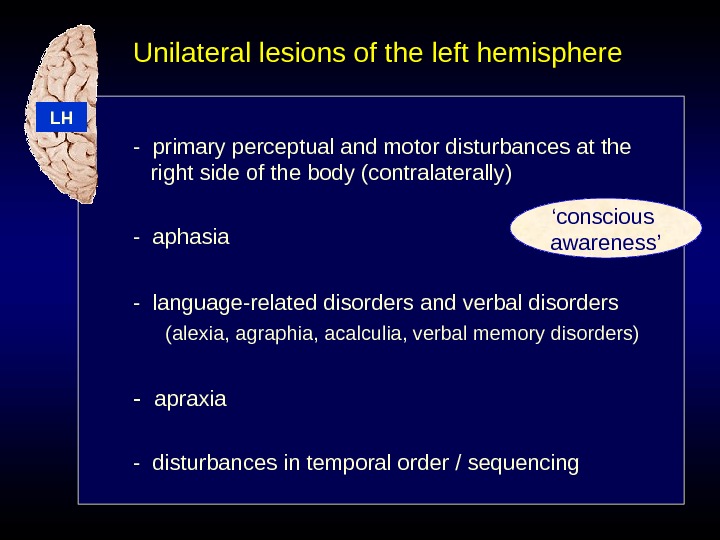
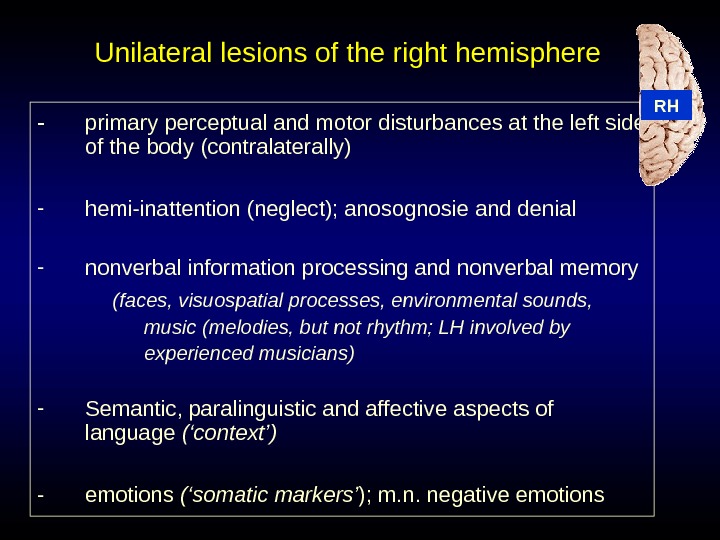
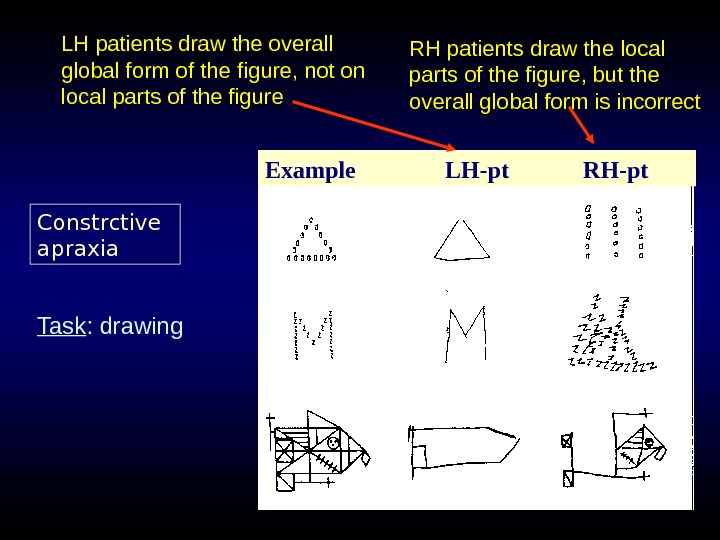
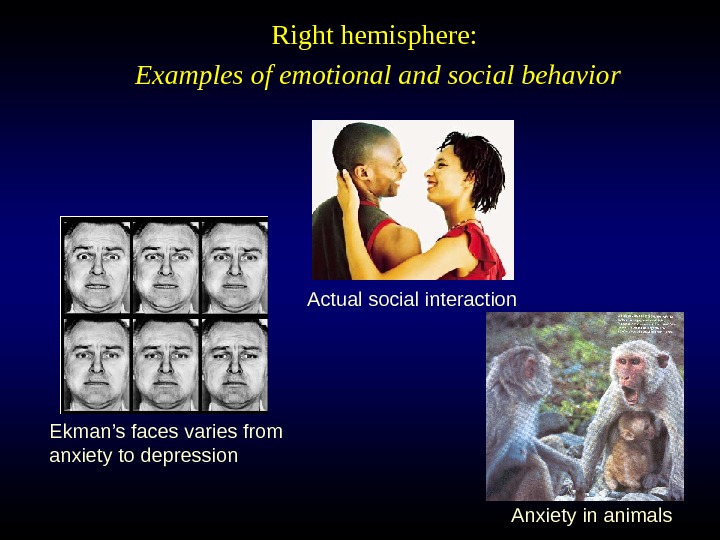
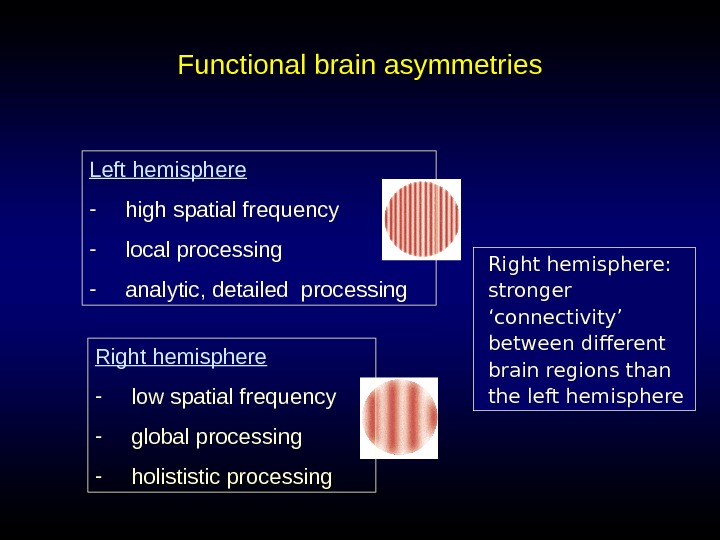
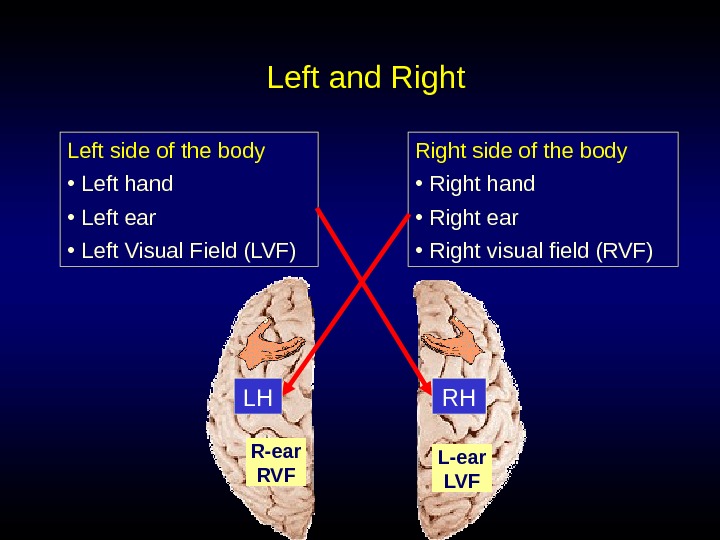
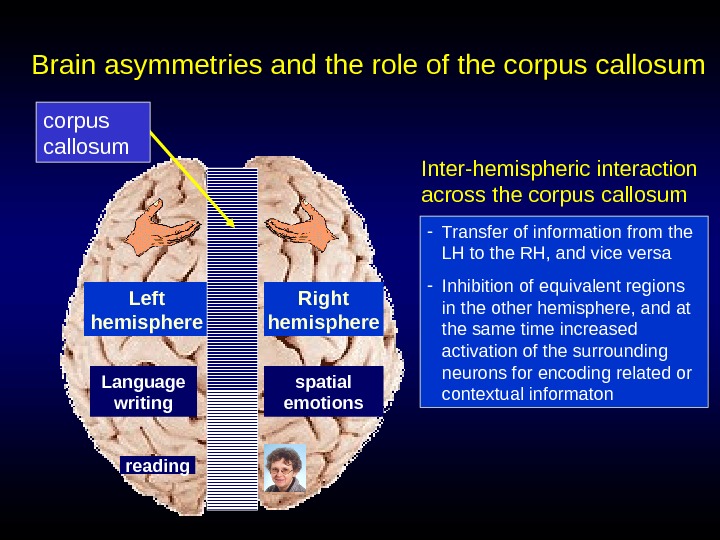
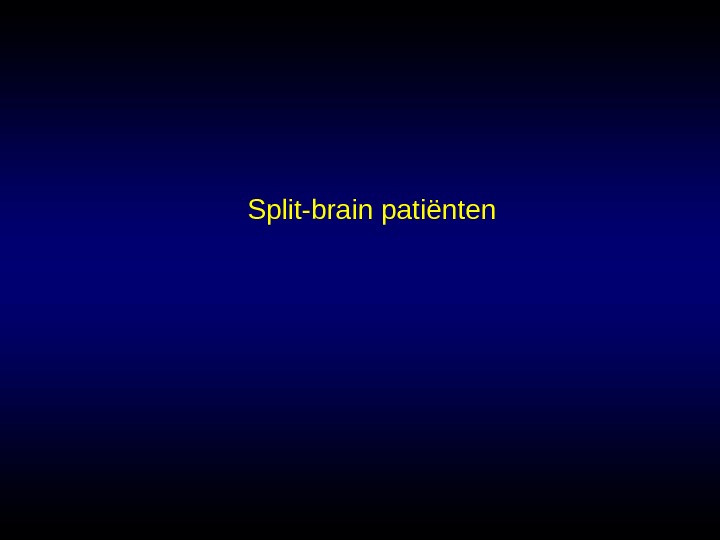
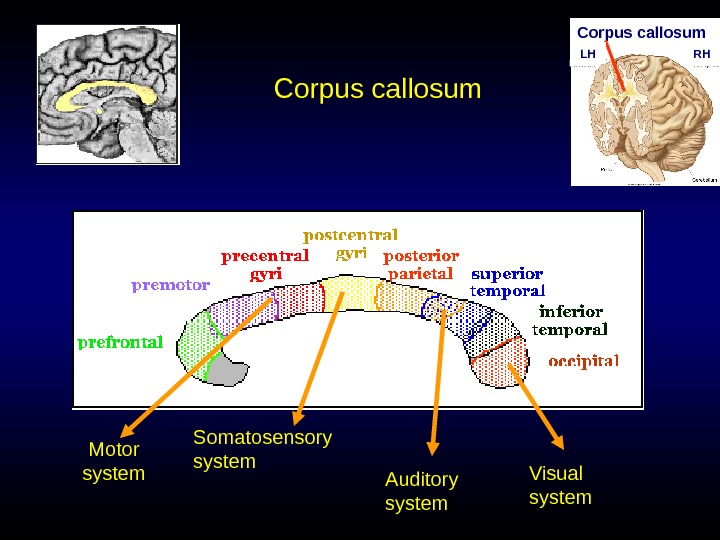

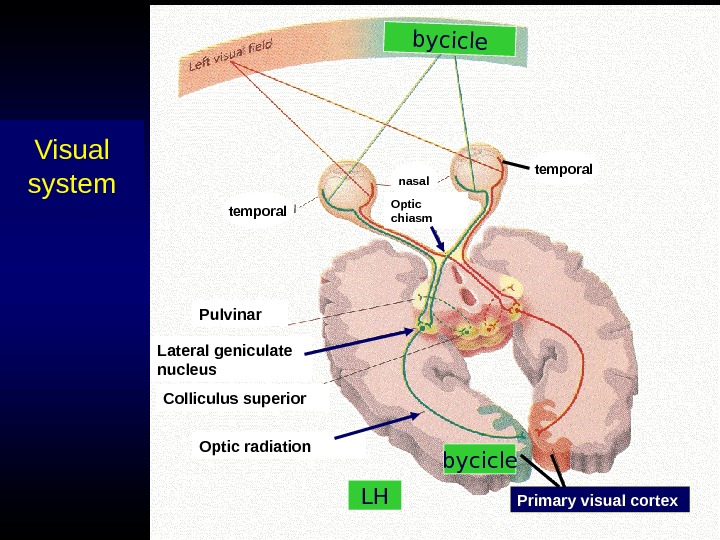
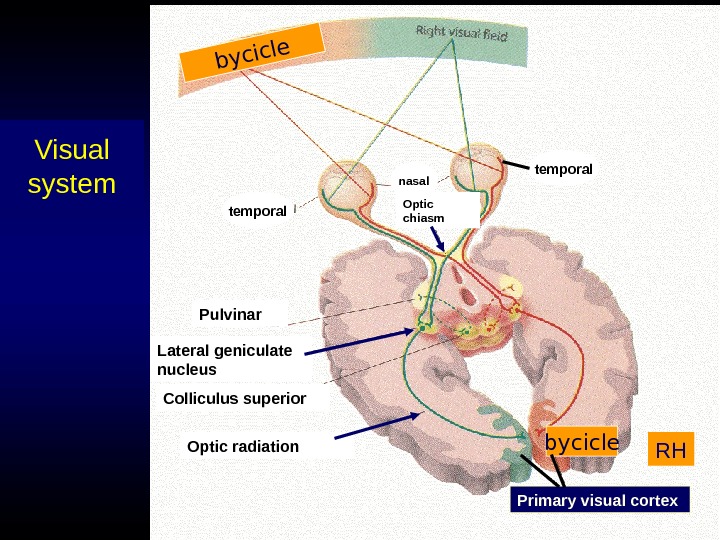
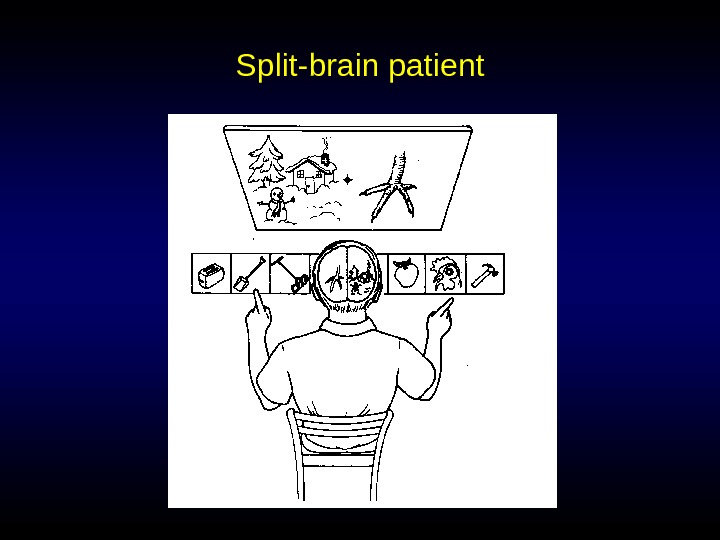
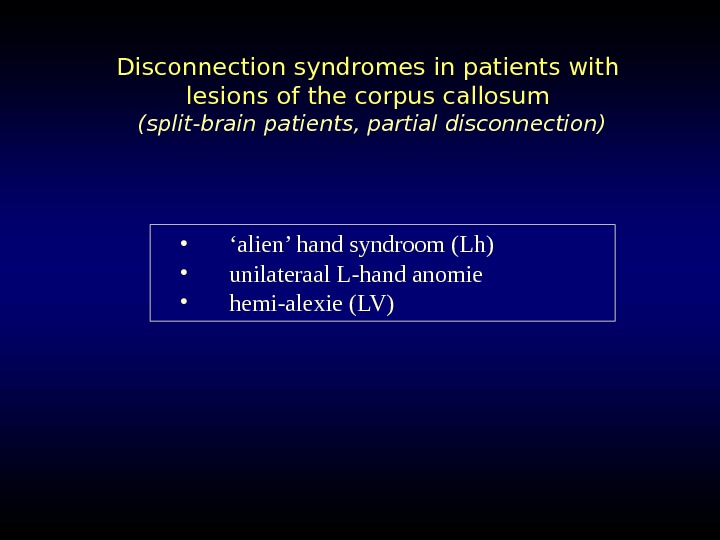
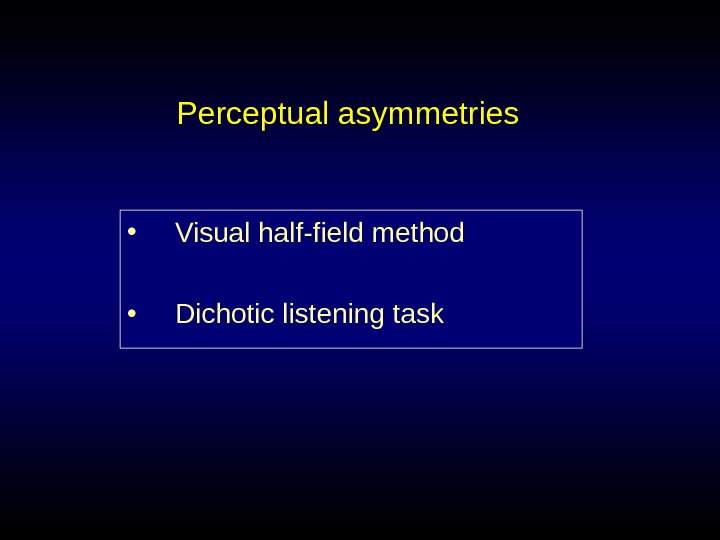
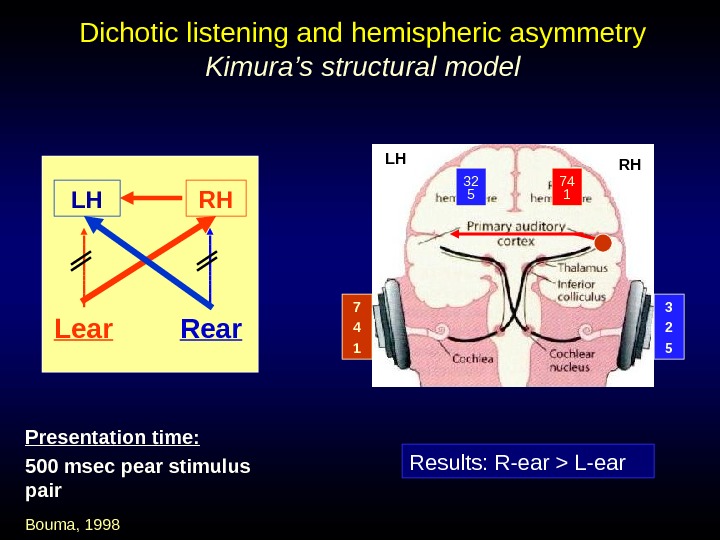
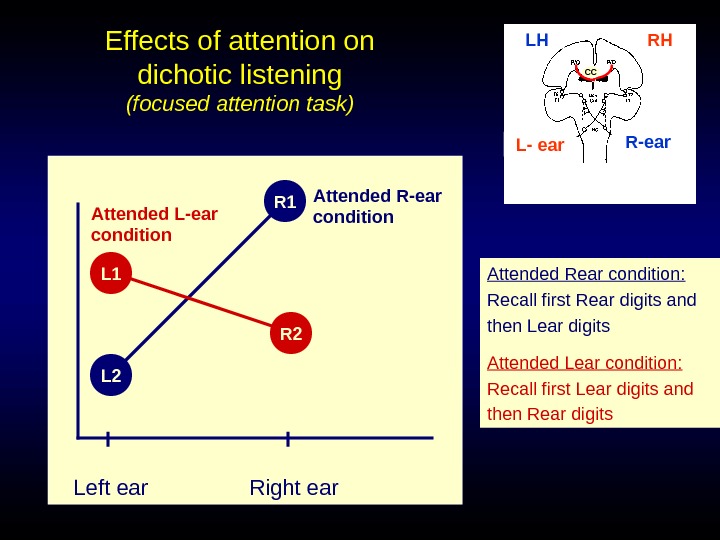
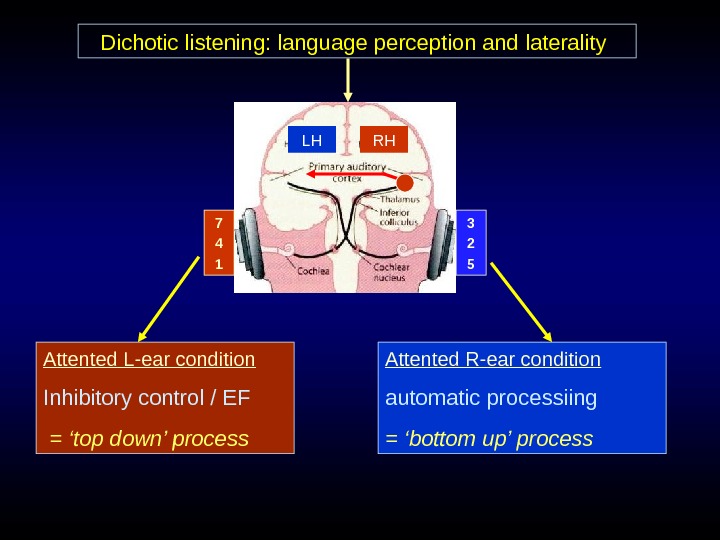
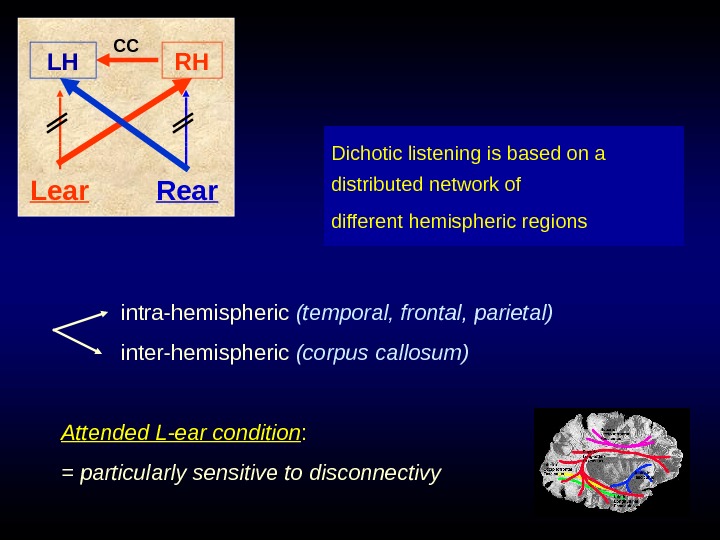
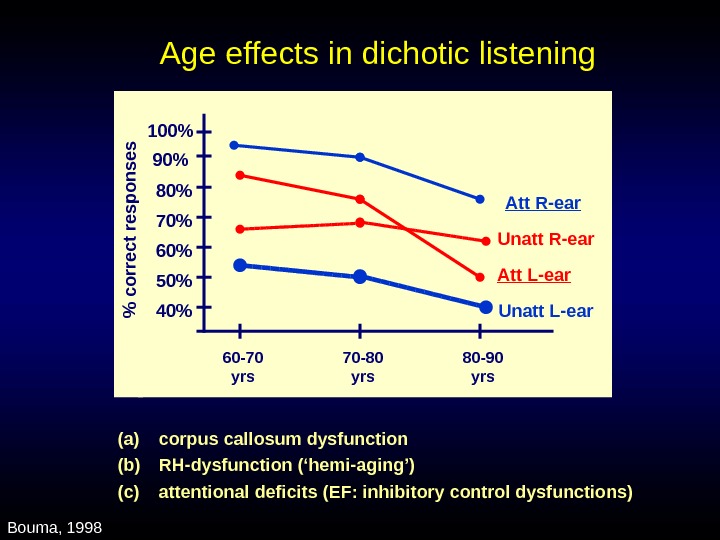
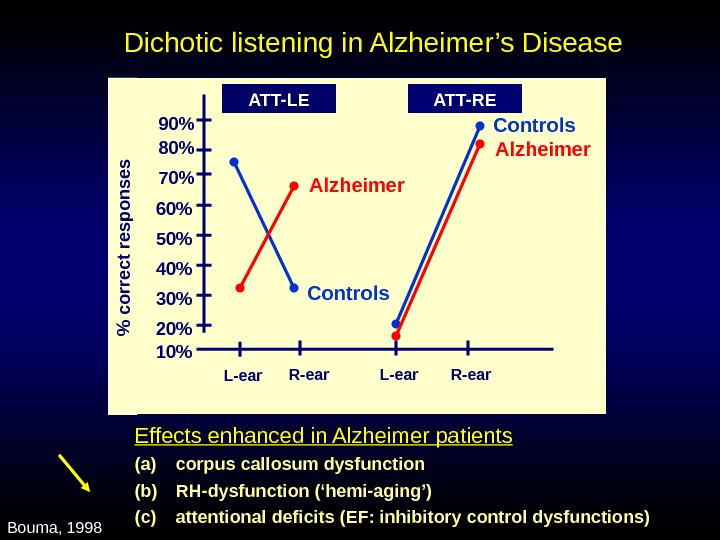
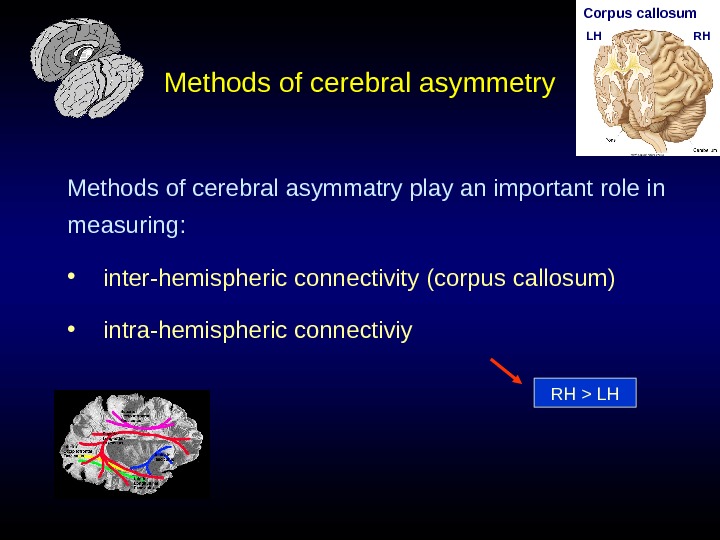
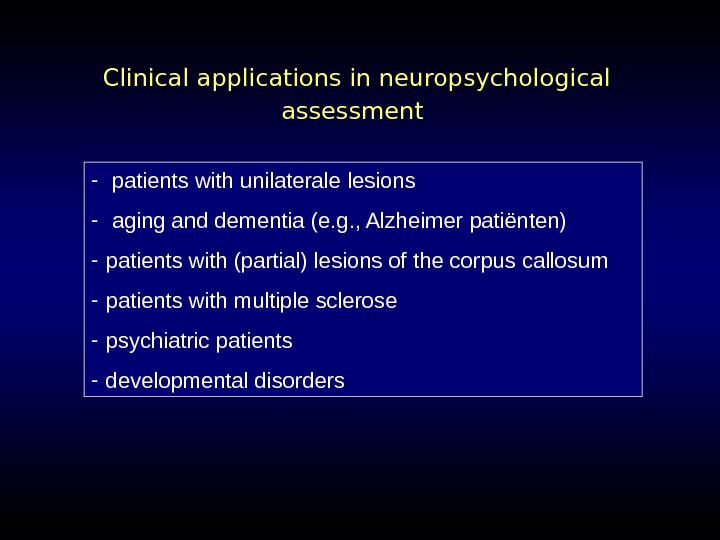
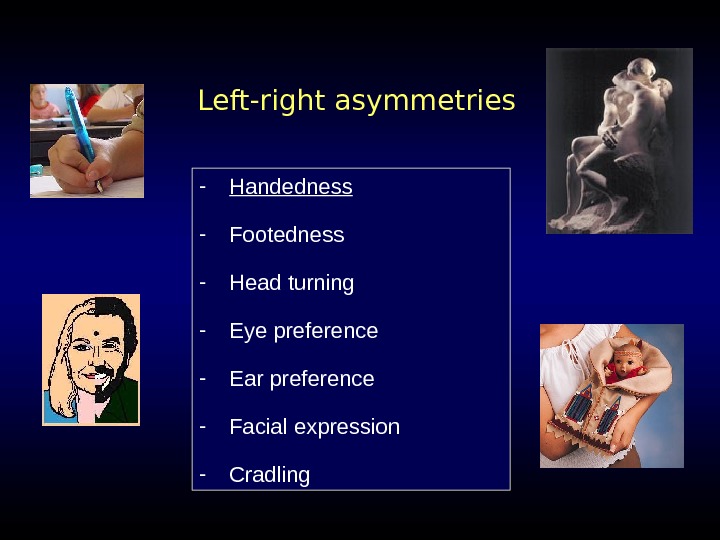
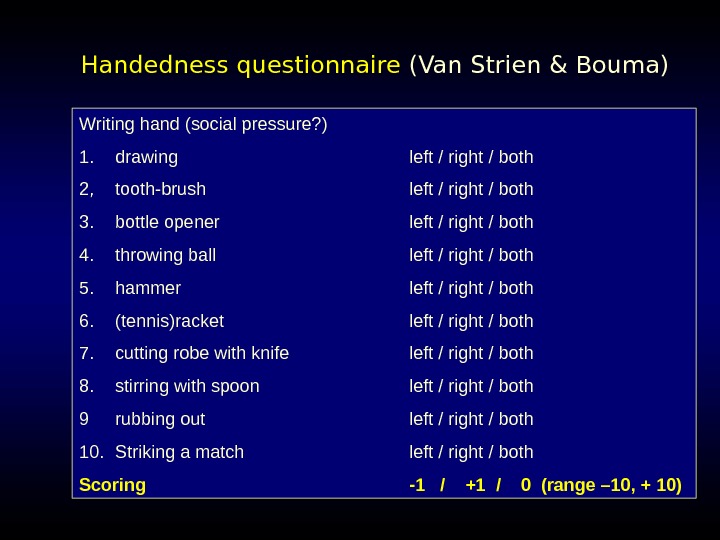
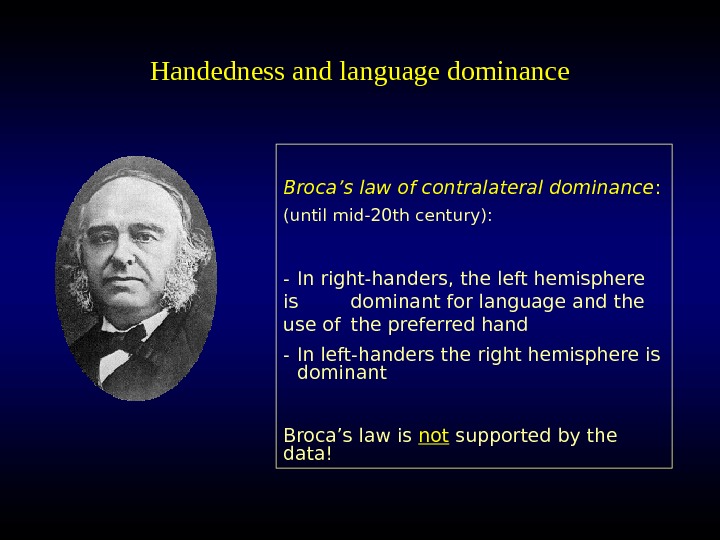
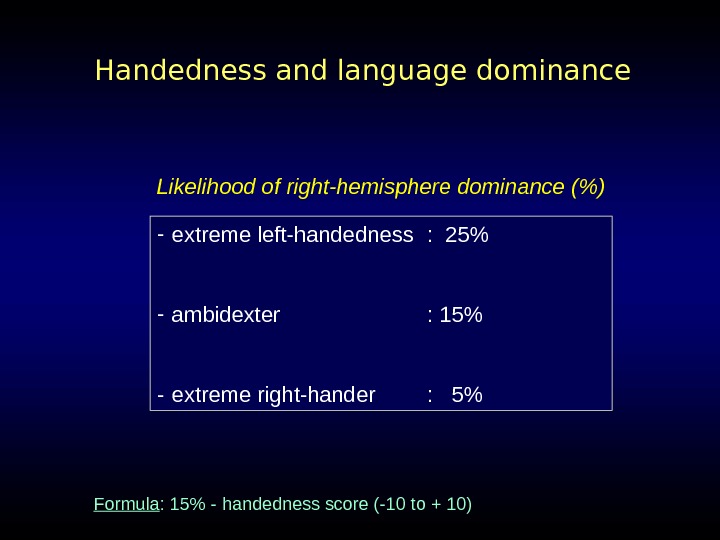
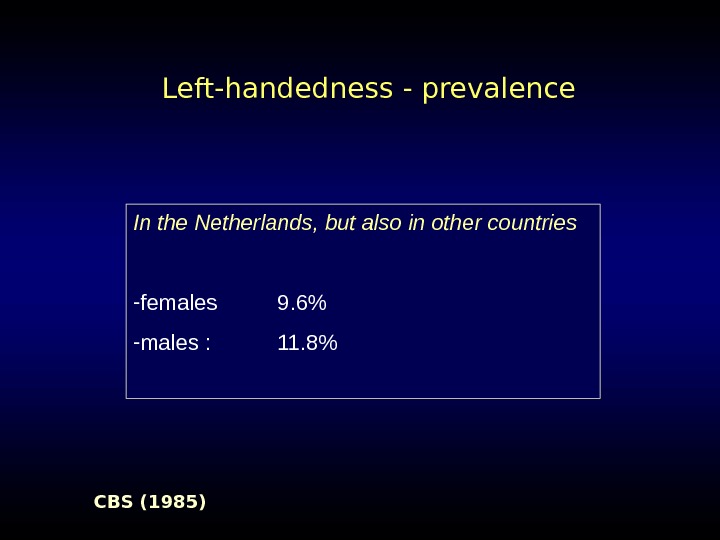
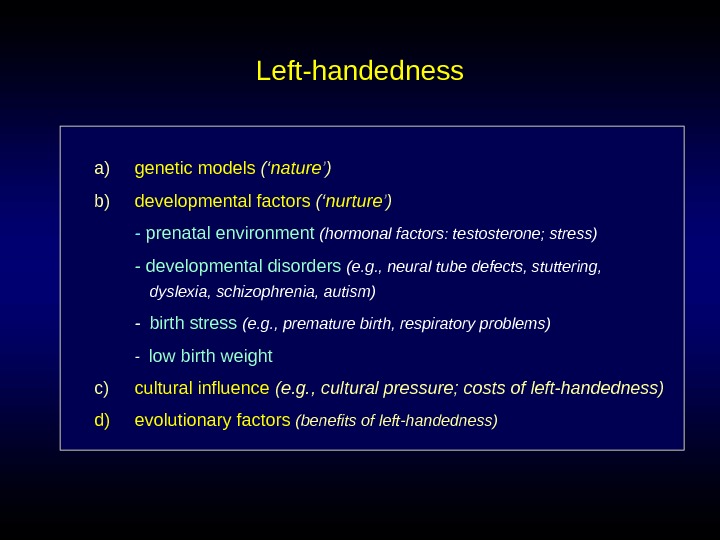
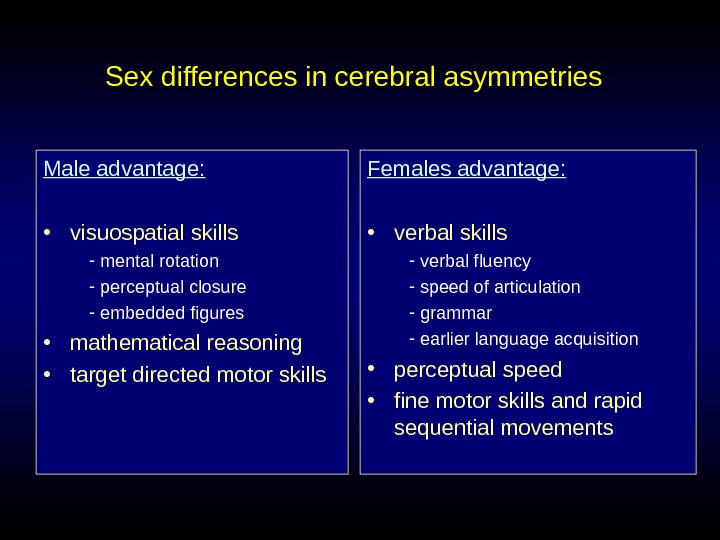
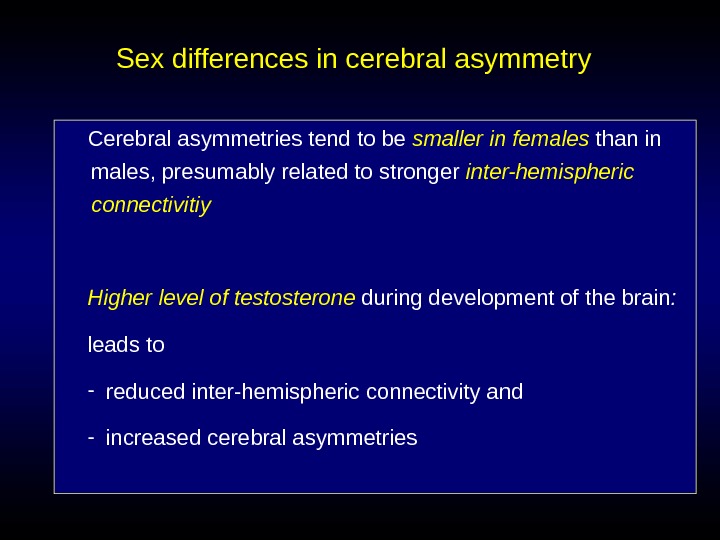
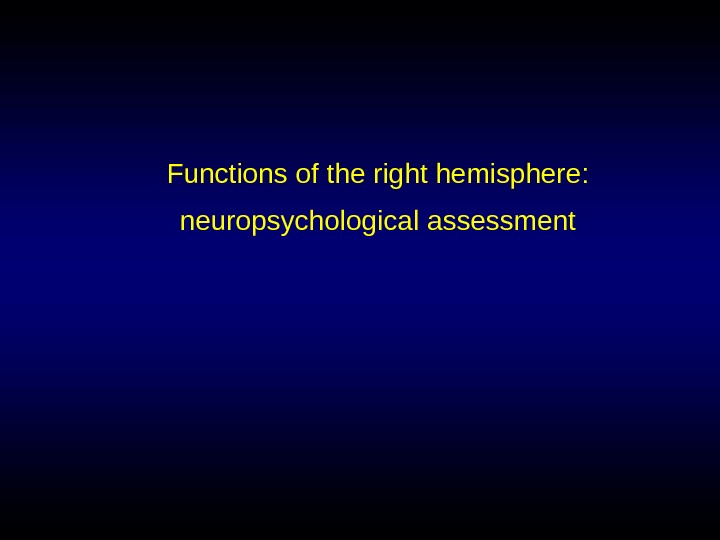
cerebral_asymmetry_moscou_part_i.ppt
- Размер: 6.8 Mегабайта
- Количество слайдов: 42
Описание презентации Cerebral asymmetry and the specific functions of the по слайдам
 Cerebral asymmetry and the specific functions of the right hemishere Anke Bouma Leonardo Da Vinci Dept. of Clinical and Developmental Psychology Rijks. Universiteit van Groningen
Cerebral asymmetry and the specific functions of the right hemishere Anke Bouma Leonardo Da Vinci Dept. of Clinical and Developmental Psychology Rijks. Universiteit van Groningen
 • General overview of the cerebral asymmetries and the functions of the corpus callosum • Specific functions of the right hemisphere, and consequences for neuropsychological assessment Cerebral asymmetry and the specific functions of the right hemishere
• General overview of the cerebral asymmetries and the functions of the corpus callosum • Specific functions of the right hemisphere, and consequences for neuropsychological assessment Cerebral asymmetry and the specific functions of the right hemishere
 Cerebral asymmetry Left hemisphere Right hemipshere Corpus callosum RHLH
Cerebral asymmetry Left hemisphere Right hemipshere Corpus callosum RHLH
 Cerebral asymmetry “ Brain asymmetry has been observed in animals and humans structurally, functionally, and behaviorally. This lateralization is thought to originate from evolutionary, hereditary, developmental, experiential and pathological factors” Toga & Thompson, Nature Reviews Neuroscience,
Cerebral asymmetry “ Brain asymmetry has been observed in animals and humans structurally, functionally, and behaviorally. This lateralization is thought to originate from evolutionary, hereditary, developmental, experiential and pathological factors” Toga & Thompson, Nature Reviews Neuroscience,
 Human brain asymmetries • Structural brain asymmetries • Functional brain asymmetries • Perceptual asymmetries • Motor asymmetries • Neurochemical differences Research methods
Human brain asymmetries • Structural brain asymmetries • Functional brain asymmetries • Perceptual asymmetries • Motor asymmetries • Neurochemical differences Research methods
 Human brain asymmetries • Pati ents with unilateral lesions • Split-brain pati ent • Normal subjects ( age, sex, hand preference ) • Bilateral lesions (e. g. , Alzheimerpati ënten ) • Developmental disorders • Psychiatric patients Clinical relevance
Human brain asymmetries • Pati ents with unilateral lesions • Split-brain pati ent • Normal subjects ( age, sex, hand preference ) • Bilateral lesions (e. g. , Alzheimerpati ënten ) • Developmental disorders • Psychiatric patients Clinical relevance
 Structural brain asymmetries Macroscopical posterioranterior LH RH Counterclockwise torque Sylvian fissure. LH RH WBGebied van Broca Gebied van Wernicke
Structural brain asymmetries Macroscopical posterioranterior LH RH Counterclockwise torque Sylvian fissure. LH RH WBGebied van Broca Gebied van Wernicke
 Structural brain asymmetries Microscopical Left hemisphere: more detailed processing and expression of information Right hemisphere: more focused on connectivity between different brain regions
Structural brain asymmetries Microscopical Left hemisphere: more detailed processing and expression of information Right hemisphere: more focused on connectivity between different brain regions
 Left hemisphere : dopamine (motor activation) Right hemisphere : norepinephrine (alertness, orientation to new stimuli)Structural brain asymmetries Neurochemical
Left hemisphere : dopamine (motor activation) Right hemisphere : norepinephrine (alertness, orientation to new stimuli)Structural brain asymmetries Neurochemical
 Functional brain asymmetry — Not a simple dichotomy — Not a modern phrenology — Is not absolute, but relative — Modular brain circuits (neuronal networks) — subprocesses — patterns of activations (intra- and inter-hemispheric connectivities)
Functional brain asymmetry — Not a simple dichotomy — Not a modern phrenology — Is not absolute, but relative — Modular brain circuits (neuronal networks) — subprocesses — patterns of activations (intra- and inter-hemispheric connectivities)
 Unilateral lesions of the left hemisphere — primary perceptual and motor disturbances at the right side of the body (contralaterally) — aphasia — language-related disorders and verbal disorders (alexia, agraphia, acalculia, verbal memory disorders) — apraxia — disturbances in temporal order / sequencing ‘ conscious awareness’LH
Unilateral lesions of the left hemisphere — primary perceptual and motor disturbances at the right side of the body (contralaterally) — aphasia — language-related disorders and verbal disorders (alexia, agraphia, acalculia, verbal memory disorders) — apraxia — disturbances in temporal order / sequencing ‘ conscious awareness’LH
 Unilateral lesions of the right hemisphere — primary perceptual and motor disturbances at the left side of the body (contralaterally) — hemi-inattention (neglect); anosognosie and denial — nonverbal information processing and nonverbal memory (faces, visuospatial processes, environmental sounds, music (melodies, but not rhythm; LH involved by experienced musicians) — Semantic, paralinguistic and affective aspects of language (‘context’) — emotions ( ‘somatic markers’ ); m. n. negative emotions RH
Unilateral lesions of the right hemisphere — primary perceptual and motor disturbances at the left side of the body (contralaterally) — hemi-inattention (neglect); anosognosie and denial — nonverbal information processing and nonverbal memory (faces, visuospatial processes, environmental sounds, music (melodies, but not rhythm; LH involved by experienced musicians) — Semantic, paralinguistic and affective aspects of language (‘context’) — emotions ( ‘somatic markers’ ); m. n. negative emotions RH
 LH patients draw the overall global form of the figure, not on local parts of the figure Example LH-pt RH-pt RH pati ents draw the local parts of the figure, but the overall global form is incorrect Task : drawing. Constrctive apraxia
LH patients draw the overall global form of the figure, not on local parts of the figure Example LH-pt RH-pt RH pati ents draw the local parts of the figure, but the overall global form is incorrect Task : drawing. Constrctive apraxia
 Actual social interaction Ekman’s faces varies from anxiety to depression Right hemisphere: Examples of emotional and social behavior Anxiety in animals
Actual social interaction Ekman’s faces varies from anxiety to depression Right hemisphere: Examples of emotional and social behavior Anxiety in animals
 Functional brain asymmetries 10 — 26 W. W. Norton. Left hemisphere — high spatial frequency — local processing — analytic, detailed processing Right hemisphere — low spatial frequency — global processing — holististic processing Right hemisphere: stronger ‘connectivity’ between different brain regions than the left hemisphere
Functional brain asymmetries 10 — 26 W. W. Norton. Left hemisphere — high spatial frequency — local processing — analytic, detailed processing Right hemisphere — low spatial frequency — global processing — holististic processing Right hemisphere: stronger ‘connectivity’ between different brain regions than the left hemisphere
 Left and Right Left side of the body • Left hand • Left ear • Left Visual Field (LVF) Right side of the body • Right hand • Right ear • Right visual field (RVF) LH RH R-ear RVF L-ear LV
Left and Right Left side of the body • Left hand • Left ear • Left Visual Field (LVF) Right side of the body • Right hand • Right ear • Right visual field (RVF) LH RH R-ear RVF L-ear LV
 Brain asymmetries and the role of the corpus callosum Left hemisphere Right hemispherecorpus callosum — Transfer of information from the LH to the RH, and vice versa — Inhibition of equivalent regions in the other hemisphere, and at the same time increased activation of the surrounding neurons for encoding related or contextual informaton. Language writing reading spatial emotions Inter-hemispheric interaction across the corpus callosum
Brain asymmetries and the role of the corpus callosum Left hemisphere Right hemispherecorpus callosum — Transfer of information from the LH to the RH, and vice versa — Inhibition of equivalent regions in the other hemisphere, and at the same time increased activation of the surrounding neurons for encoding related or contextual informaton. Language writing reading spatial emotions Inter-hemispheric interaction across the corpus callosum
 Split-brain pati ënten
Split-brain pati ënten
 Corpus callosum LH RH Visual system. Motor system Somatosensory system Auditory system
Corpus callosum LH RH Visual system. Motor system Somatosensory system Auditory system
 Split-brain pati ënt Left hand Right hand Pre- operative Postoperatively, the right hand performed poorly due to the disconnection of the LH (right hand) and the RH (spatial functions)
Split-brain pati ënt Left hand Right hand Pre- operative Postoperatively, the right hand performed poorly due to the disconnection of the LH (right hand) and the RH (spatial functions)
 Visual system Optische radiatie. Colliculus superior. Lateral genuculate nucleus Pulvinar Primaire visuele cortex. Optisch chiasma nasaal temporaal 13 13 LVV LVVbycicle Primary visual cortex. Optic radiation. Colliculus superior. Lateral geniculate nucleus Pulvinar Optic chiasm nasal temporal LH
Visual system Optische radiatie. Colliculus superior. Lateral genuculate nucleus Pulvinar Primaire visuele cortex. Optisch chiasma nasaal temporaal 13 13 LVV LVVbycicle Primary visual cortex. Optic radiation. Colliculus superior. Lateral geniculate nucleus Pulvinar Optic chiasm nasal temporal LH
 Visual system Optische radiatie. Colliculus superior. Lateral genuculate nucleus Pulvinar Primaire visuele cortex. Optisch chiasma nasaal temporaal 13 13 Fiets. LVV bycicle Primary visual cortex. Optic radiation. Colliculus superior. Lateral geniculate nucleus Pulvinar Optic chiasmnasal temporal RH
Visual system Optische radiatie. Colliculus superior. Lateral genuculate nucleus Pulvinar Primaire visuele cortex. Optisch chiasma nasaal temporaal 13 13 Fiets. LVV bycicle Primary visual cortex. Optic radiation. Colliculus superior. Lateral geniculate nucleus Pulvinar Optic chiasmnasal temporal RH
 Split-brain pati ent
Split-brain pati ent
 Disconnection syndromes in patients with lesions of the corpus callosum (split-brain patients, partial disconnection) • ‘ alien’ hand syndroom (Lh) • unilateraal L-hand anomie • hemi-alexie (LV)
Disconnection syndromes in patients with lesions of the corpus callosum (split-brain patients, partial disconnection) • ‘ alien’ hand syndroom (Lh) • unilateraal L-hand anomie • hemi-alexie (LV)
 Perceptual asymmetries • Visual half-field method • Dichotic listening task
Perceptual asymmetries • Visual half-field method • Dichotic listening task
 Lear Dichotic listening and hemispheric asymmetry Kimura’s structural model LH RH Results: R-ear > L-ear. Presentation time: 500 msec pear stimulus pair Rear Bouma, 1998 7 4 1 3 2 5 LH RH
Lear Dichotic listening and hemispheric asymmetry Kimura’s structural model LH RH Results: R-ear > L-ear. Presentation time: 500 msec pear stimulus pair Rear Bouma, 1998 7 4 1 3 2 5 LH RH
 Effects of attention on dichotic listening (focused attention task) Left ear Right ear Attended R-ear condition. Attended L-ear condition L 1 L 2 R 2 R 1 Attended Rear condition: Recall first Rear digits and then Lear digits Attended Lear condition: Recall first Lear digits and then Rear digits LH RH R-ear L- ear
Effects of attention on dichotic listening (focused attention task) Left ear Right ear Attended R-ear condition. Attended L-ear condition L 1 L 2 R 2 R 1 Attended Rear condition: Recall first Rear digits and then Lear digits Attended Lear condition: Recall first Lear digits and then Rear digits LH RH R-ear L- ear
 Dichotic listening: language perception and laterality Attented R-ear condition automatic processiing = ‘bottom up’ process. Attented L-ear condition Inhibitory control / EF = ‘top down’ process 7 4 1 3 2 5 LH RH
Dichotic listening: language perception and laterality Attented R-ear condition automatic processiing = ‘bottom up’ process. Attented L-ear condition Inhibitory control / EF = ‘top down’ process 7 4 1 3 2 5 LH RH
 Dichotic listening is based on a distributed network of different hemispheric regions intra-hemispheric (temporal, frontal, parietal) inter-hemispheric (corpus callosum)Lear LH RH Rear. CC Attended L-ear condition : = particularly sensitive to disconnectivy
Dichotic listening is based on a distributed network of different hemispheric regions intra-hemispheric (temporal, frontal, parietal) inter-hemispheric (corpus callosum)Lear LH RH Rear. CC Attended L-ear condition : = particularly sensitive to disconnectivy
 Age effects in dichotic listening 40%70%80% 60% 50% 90% 100% 60 -70 yrs 70 -80 yrs 80 -90 yrs Att R-ear Unatt R-ear Att L-ear Unatt L-ear% co rre ct re sp o n se s (a) corpus callosum dysfunction (b) RH-dysfunction (‘hemi-aging’) (c) attentional deficits (EF: inhibitory control dysfunctions) Bouma,
Age effects in dichotic listening 40%70%80% 60% 50% 90% 100% 60 -70 yrs 70 -80 yrs 80 -90 yrs Att R-ear Unatt R-ear Att L-ear Unatt L-ear% co rre ct re sp o n se s (a) corpus callosum dysfunction (b) RH-dysfunction (‘hemi-aging’) (c) attentional deficits (EF: inhibitory control dysfunctions) Bouma,
 Dichotic listening in Alzheimer’s Disease 20%50%60% 40% 30% 70% 80% L-ear% co rre ct resp o n se s Effects enhanced in Alzheimer patients (a) corpus callosum dysfunction (b) RH-dysfunction (‘hemi-aging’) (c) attentional deficits (EF: inhibitory control dysfunctions) R-ear L-ear R-ear 90% 10% ATT-LE ATT-RE Bouma, 1998 Alzheimer Controls
Dichotic listening in Alzheimer’s Disease 20%50%60% 40% 30% 70% 80% L-ear% co rre ct resp o n se s Effects enhanced in Alzheimer patients (a) corpus callosum dysfunction (b) RH-dysfunction (‘hemi-aging’) (c) attentional deficits (EF: inhibitory control dysfunctions) R-ear L-ear R-ear 90% 10% ATT-LE ATT-RE Bouma, 1998 Alzheimer Controls
 Methods of cerebral asymmetry Methods of cerebral asymmatry play an important role in measuring: • inter-hemispheric connectivity (corpus callosum) • intra-hemispheric connectiviy Corpus callosum LH RH RH > LH
Methods of cerebral asymmetry Methods of cerebral asymmatry play an important role in measuring: • inter-hemispheric connectivity (corpus callosum) • intra-hemispheric connectiviy Corpus callosum LH RH RH > LH
 Clinical applications in neuropsychological assessment — pati ents with unilaterale lesions — aging and dementia (e. g. , Alzheimer pati ënten) — patients with (partial) lesions of the corpus callosum — patients with multiple sclerose — psychiatric pati ents — developmental disorders
Clinical applications in neuropsychological assessment — pati ents with unilaterale lesions — aging and dementia (e. g. , Alzheimer pati ënten) — patients with (partial) lesions of the corpus callosum — patients with multiple sclerose — psychiatric pati ents — developmental disorders
 Left-right asymmetries — Handedness — Footedness — Head turning — Eye preference — Ear preference — Facial expression — Cradling
Left-right asymmetries — Handedness — Footedness — Head turning — Eye preference — Ear preference — Facial expression — Cradling
 Handedness questionnaire (Van Strien & Bouma) Writing hand (social pressure? ) 1. drawing left / right / both 2, tooth-brush left / right / both 3. bottle opener left / right / both 4. throwing ball left / right / both 5. hammer left / right / both 6. (tennis)racket left / right / both 7. cutting robe with knife left / right / both 8. stirring with spoon left / right / both 9 rubbing out left / right / both 10. Striking a match left / right / both Scoring -1 / +1 / 0 (range – 10, + 10)
Handedness questionnaire (Van Strien & Bouma) Writing hand (social pressure? ) 1. drawing left / right / both 2, tooth-brush left / right / both 3. bottle opener left / right / both 4. throwing ball left / right / both 5. hammer left / right / both 6. (tennis)racket left / right / both 7. cutting robe with knife left / right / both 8. stirring with spoon left / right / both 9 rubbing out left / right / both 10. Striking a match left / right / both Scoring -1 / +1 / 0 (range – 10, + 10)
 Handedness and language dominance Broca’s law of contralateral dominance : (until mid-20 th century): — In right-handers, the left hemisphere is dominant for language and the use of the preferred hand — In left-handers the right hemisphere is dominant Broca’s law is not supported by the data!
Handedness and language dominance Broca’s law of contralateral dominance : (until mid-20 th century): — In right-handers, the left hemisphere is dominant for language and the use of the preferred hand — In left-handers the right hemisphere is dominant Broca’s law is not supported by the data!
 Handedness and language dominance — extreme left-handedness : 25% — ambidexter : 15% — extreme right-hander : 5%Likelihood of right-hemisphere dominance (%) Formula : 15% — handedness score (-10 to + 10)
Handedness and language dominance — extreme left-handedness : 25% — ambidexter : 15% — extreme right-hander : 5%Likelihood of right-hemisphere dominance (%) Formula : 15% — handedness score (-10 to + 10)
 Left-handedness — prevalence In the Netherlands, but also in other countries — females 9. 6% — males : 11. 8% CBS (1985)
Left-handedness — prevalence In the Netherlands, but also in other countries — females 9. 6% — males : 11. 8% CBS (1985)
 Left-handedness a) genetic models (‘ nature ’ ) b) developmental factors (‘ nurture ’ ) — prenatal environment (hormonal factors: testosterone; stress) — developmental disorders (e. g. , neural tube defects, stuttering, dyslexia, schizophrenia, autism) — birth stress (e. g. , premature birth, respiratory problems) — low birth weight c) cultural influence (e. g. , cultural pressure; costs of left-handedness) d) evolutionary factors (benefits of left-handedness)
Left-handedness a) genetic models (‘ nature ’ ) b) developmental factors (‘ nurture ’ ) — prenatal environment (hormonal factors: testosterone; stress) — developmental disorders (e. g. , neural tube defects, stuttering, dyslexia, schizophrenia, autism) — birth stress (e. g. , premature birth, respiratory problems) — low birth weight c) cultural influence (e. g. , cultural pressure; costs of left-handedness) d) evolutionary factors (benefits of left-handedness)
 Sex differences in cerebral asymmetries Male advantage: • visuospatial skills — mental rotation — perceptual closure — embedded figures • mathematical reasoning • target directed motor skills Females advantage: • verbal skills — verbal fluency — speed of articulation — grammar — earlier language acquisition • perceptual speed • fine motor skills and rapid sequential movements
Sex differences in cerebral asymmetries Male advantage: • visuospatial skills — mental rotation — perceptual closure — embedded figures • mathematical reasoning • target directed motor skills Females advantage: • verbal skills — verbal fluency — speed of articulation — grammar — earlier language acquisition • perceptual speed • fine motor skills and rapid sequential movements
 Sex differences in cerebral asymmetry Cerebral asymmetries tend to be smaller in females than in males, presumably related to stronger inter-hemispheric connectivitiy Higher level of testosterone during development of the brain : leads to — reduced inter-hemispheric connectivity and — increased cerebral asymmetries
Sex differences in cerebral asymmetry Cerebral asymmetries tend to be smaller in females than in males, presumably related to stronger inter-hemispheric connectivitiy Higher level of testosterone during development of the brain : leads to — reduced inter-hemispheric connectivity and — increased cerebral asymmetries
 Functions of the right hemisphere: neuropsychological assessment
Functions of the right hemisphere: neuropsychological assessment

